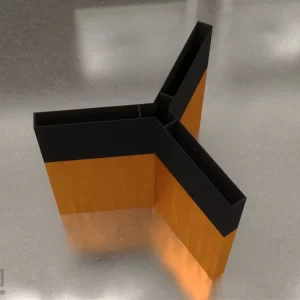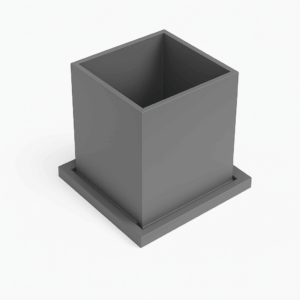$4,999.00 – $9,900.00Price range: $4,999.00 through $9,900.00
Our advanced home cage system is meticulously designed to observe natural and realistic behaviors, offering a safe and controlled environment tailored for behavioral research. Whether for short-term, intermittent, or extended studies, this system ensures comfort and optimal conditions to achieve reliable and reproducible results.
Each cage is equipped with a sophisticated ventilation system and continuous monitoring of gaseous by-products, as well as food and water levels and temperature, ensuring a comprehensive approach to animal welfare.
Our system provides flexibility with options for manual tracking, photo-array, or 24/7 video surveillance, and can be scaled from a single unit to a larger multi-cage setup.
Designed for convenience, each cage is simple to assemble and disassemble, facilitating easy cleaning and maintenance.
Additional accessories are available to enhance the Home Cage system. Please specify the number of cages required when requesting a quote.

MazeEngineers empowers preclinical neuroscience research with meticulously designed, customizable behavioral apparatuses. From manual classic mazes to fully automated smart systems, we provide the tools scientists need to capture high-quality, reproducible data for studies on learning, memory, anxiety, and depression.



Mouse |
Default acrylic cage dimensions: 20 x 25 x 20 cm (Length x Width x Height) with acrylic or mesh lid |
Customizable dimensions available |
Includes water bottle (plastic and stainless steel spout) and feeder |
Ventilation system with 50 air changes per hour |
Environmental sensors for temperature (sensitivity 0.1°C); humidity (±5% RH at 20°C); gaseous by-products ammonia; carbon monoxide; methane and sulfur dioxide (minimum sensitivity of 2 ppm) |
Camera mount |
Optional: Photo array tracking |
Optional: Camera and video tracking software and hardware for 24/7 monitoring |
Easy assembly/de-assembly for cleaning |
Rat |
Cage dimensions: 32 x 40 x 32 cm(Length x Width x Height) with acrylic or mesh lid |
Customizable dimensions available |
Includes water bottle (plastic and stainless steel spout) and feeder |
Ventilation system with 50 air changes per hour |
Environmental sensors for temperature (sensitivity 0.1°C); humidity (±5% RH at 20°C); gaseous by-products ammonia; carbon monoxide; methane and sulfur dioxide (minimum sensitivity of 2 ppm) |
Camera mount |
Optional: Photo array tracking |
Optional: Camera and video tracking software and hardware for 24/7 monitoring |
Easy assembly/de-assembly for cleaning |

When assessing rodent behavior outside their familiar home cage, it’s crucial to ensure that the results are both accurate and reproducible. Research has shown that studying rodents away from their home environment can lead to inconsistent findings, as these conditions often fail to capture the full complexity of the rodents’ natural behaviors and may induce stress and anxiety (Rudeck et al., 2020; Clement and Brockley, 1989). Additionally, environmental changes such as variations in light levels have been shown to impact behaviors related to activity and food intake (Acosta et al., 2020; Manouze et al., 2019). To address these challenges, our automated home cage system is designed to allow for the observation of rodent behavior within the comfort of their familiar surroundings, ensuring more reliable and representative results.
The Maze Engineers automated home cage system is tailored to meet your specific research needs, providing a secure and comfortable habitat for your animal models. Our system complies with USA rodent enclosure regulations; for more details, please refer to our article.
The Automated Home Cage system is designed for easy assembly and disassembly, making cleaning straightforward. We recommend using gentle cleaning agents such as unscented soap and water, 70% ethanol, or hydrochloric water for maintenance.
Our cage system features an easily cleaned acrylic enclosure, complete with either an acrylic or mesh lid, a water bottle, and a feeder. The dimensions of the cage can be adjusted to accommodate the number of rodents, ensuring they have ample space for both comfort and social interaction. Various tagging options are available to individually identify each animal (see customization options below).
Each cage is equipped with a single ventilation system, including air inlets and outlets, to ensure a continuous flow of fresh air while removing stale air. For circadian rhythm studies, the system offers customizable independent lighting settings, including both white and infrared light.
We monitor each cage for essential parameters such as temperature, food and water levels, and the presence of gaseous by-products including ammonia, carbon monoxide, methane, and sulfur dioxide.
Our rack system can accommodate multiple cages, with a maximum capacity of 72 cages per rack. Each rack includes a video tracking system with two controllers. A video camera employs the round Rubin method to move between cages, capturing and analyzing animal activity while generating health alerts. Timing for each cage is fully configurable.
Additional accessories for our cage system include enrichment tools like activity wheels, sleep/wake analysis systems, racks, and tagging systems.
Infrared photo arrays can be installed into each home cage to monitor the following parameters:
Specifications:
Customizable to your research needs, our Conductor software integrates with video tracking packages to allow for the following:
Allowing the user to track the following:

Take advantage of Neuralynx, Ethovision Integration, SMS and Email integration with the Conductor Science Software. No I/O Boxes Required
Rudeck J, Vogl S, Banneke S, Schönfelder G, Lewejohann L. Repeatability analysis improves the reliability of behavioral data. PLoS One. 2020;15: e0230900. doi: 10.1371/journal.pone.0230900.
Clement JG, Mills P, Brockway B. Use of telemetry to record body temperature and activity in mice. Journal of Pharmacological Methods. 1989;21: 129–40. doi: https://doi.org/10.1016/0160-5402(89)90031-4
Acosta J, Bussi IL, Esquivel M, Höcht C, Golombek DA, Agostino PV. Circadian modulation of motivation in mice. Behav Brain Res. 2020;382: 112471. doi: 10.1016/j.bbr.2020.112471
Manouze H, Ghestem A, Poillerat V, Bennis M, Ba-M’hamed S, Benoliel JJ, et al. Effects of single cage housing on stress, cognitive, and seizure parameters in the rat and mouse pilocarpine models of epilepsy. eNeuro. 2019;6. doi: 10.1523/eneuro.0179-18.2019
| Species | Mouse, Rat |
|---|
There are no questions yet. Be the first to ask a question about this product.